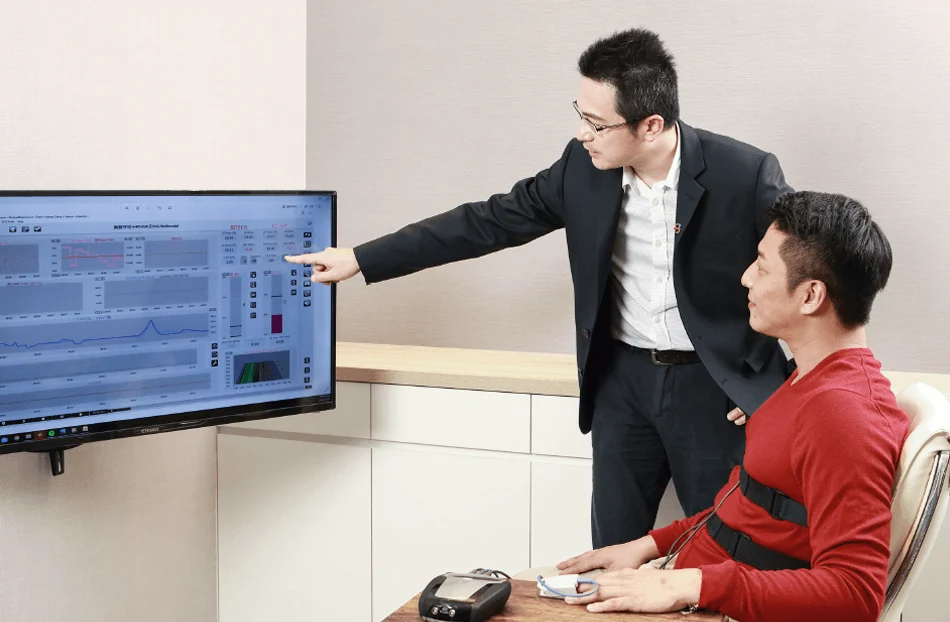Heart Rate Variability
(HRV)
SERVICE
SERVICE INTRO
What is ANS?
The autonomic nervous system (ANS) operates according to its own rhythms and is not controlled by us. The main functions of the ANS are the control of respiratory rate, heartrate, glandular secretion and the contraction and expansion of internal organs.The autonomic nervous system has two branches: the sympathetic nervous system and the parasympathetic nervous system. The sympathetic nervous system (SNS) is activated when an individual is under pressure and anxious. When the stressful event is over, it is the turn of the parasympathetic nervous system (PSNS) to inhibit the activity, and return the body to a relaxed state. If there is an imbalance between the sympathetic and parasympathetic nerves, a ” dysautonomia” occurs.
Dysautonomia – Warning Signs
The term “dysautonomia” is not a single disease, but a group of symptoms. When the ANS becomes dysfunctional, the organs regulated by the ANS may begin to show symptoms. These symptoms are warning signs that the body is getting sick, because the body may still be functioning as normal and no obvious problems can be detected by a basic physical examination. “Nervous exhaustion” is when the nerves are not supplied with enough energy, leading to symptoms such as lack of energy, low energy, and anxiety; “nervous hyperexcitability” is when the nerves are supplied with more energy than they can handle, leading to symptoms such as anxiety, irritability, and insomnia.


Who can benefit from neurofeedback?
TARGET
Test Instructions
Instructions
Testing Process
PROCESS

Functional Assessment

Attach ECG Patches

Assessment of Different Breathing States


